Todd Jarratt tastes his first racetrack experience on Yamaha’s new YZF-R6 at SMP
What you’re about to read is a short story about a young kid’s dream becoming reality…
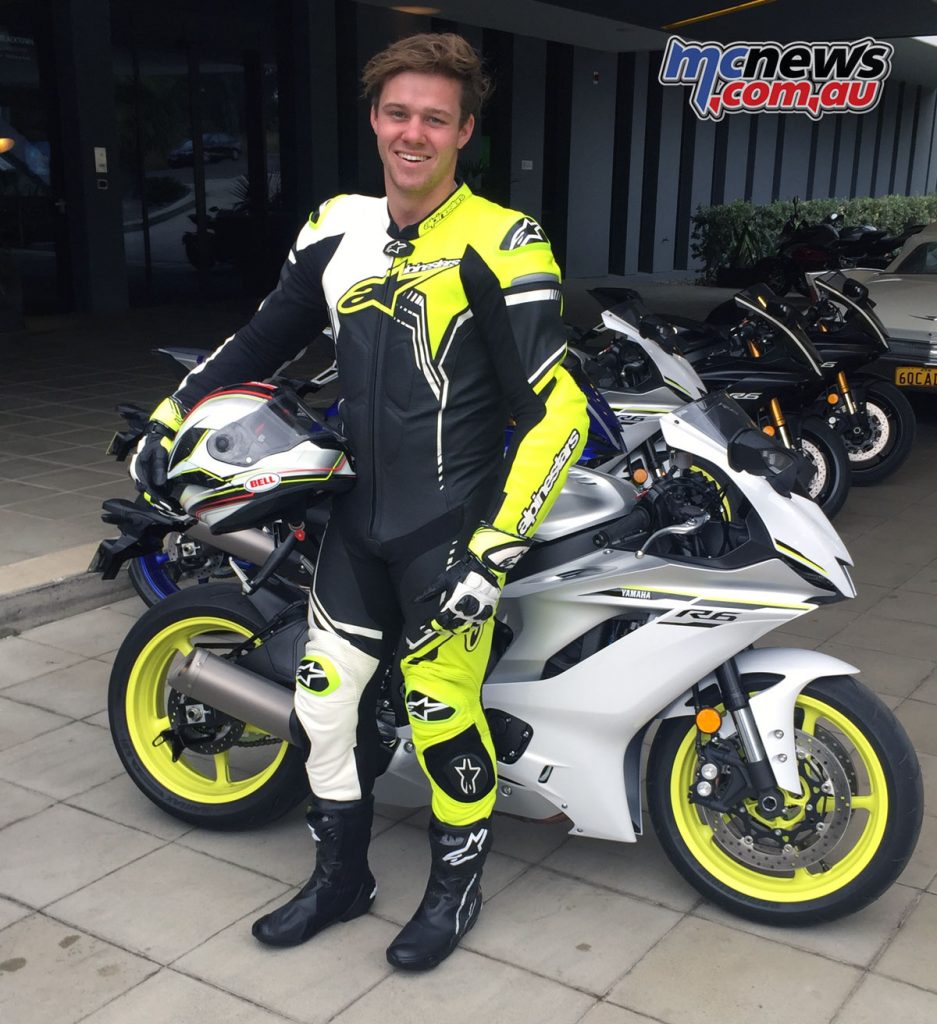
From an early age, my life has been engrossed with motorcycles – it’s in my blood. My dad (my idol), my uncle and all their mates raced dirt bikes, and as any young boy does, I wanted to be like my dad. So, I got into racing motocross and that has been the pillar of my life for the last two decades. But, I’ve been missing something this whole time. Allow me to explain.
My uncle “Feff”, who was dad’s older brother and someone I’ve forever looked up to, always had immaculately kept road bikes and gear, toy road bikes and road racing films and memorabilia. He watched MotoGP and World Superbikes religiously, always informed me of the latest road racing info, and was the person who introduced the name “Valentino Rossi” to me.
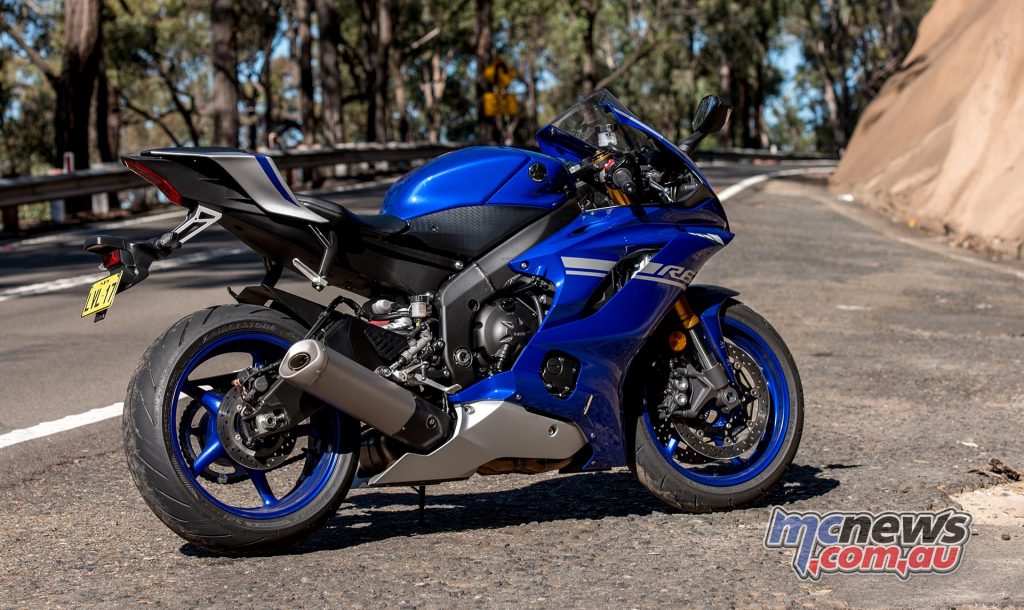
Since those early years, I’ve been fortunate to be able to do some pretty cool things in motorcycling with some extraordinary people. Whether it be travelling around Australia racing motocross, commentating events, or testing dirt bikes for MCNews, there have been some amazing experiences. But, this opportunity to road ride has filled a gap in my life I’ve had since I was a youngster, which is why this won’t be your typical motorcycle review.

The Invite
Little did I know, that MCNews had already spoken to Yamaha about the idea of putting a rookie with a motocross background on to their latest 600cc supersports machine at Sydney Motorsports Park. I first got wind of it at the end of the 2018 Yamaha YZ450F media launch (read my Y450F review here), when Trev asked if I had spoken to the guys at Yamaha about the R6 launch.
I had no idea what launch MCNews was talking about, but I knew exactly what a R6 was, and to say they had piqued my interest was a massive understatement… I put my phone down and began my hunt, as I was focused on being a part of that launch… I would’ve walked from QLD to Sydney if it meant I could take part in it (please remember I’m not crazy, just a little determined).
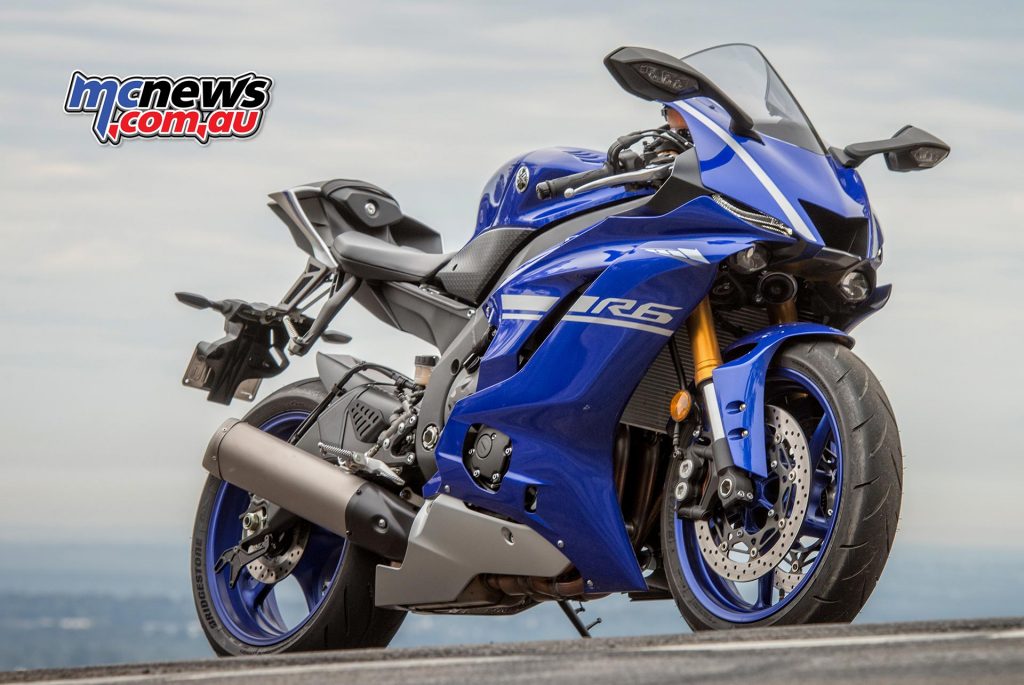
So, after MCNews and I discussed what we would like covered in the review, and Yamaha were able to confirm my spot, I was set… I had a couple of issues though. I was less than a week away from the event and one; was as nervous as a pig in a bacon factory about bending or scratching a road bike, and two; had no road riding gear at all.
I couldn’t really resolve issue one, but thanks to Alpinestars and Bell I was able to overcome issue three. These two companies were so helpful in not only organising me the required gear, but getting it sorted at such short notice. Their support enabled me to get out on track for the R6 launch not only looking the part, but feeling the part too. So, thank you guys!
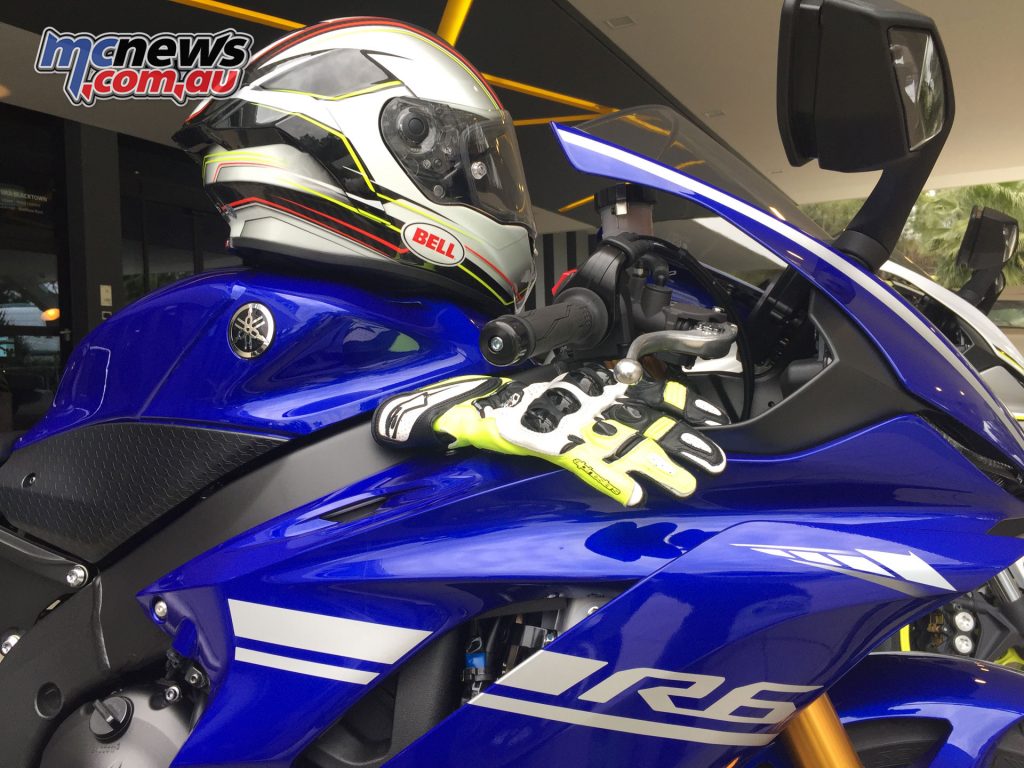
The first ride
My first ride on the YZF-R6 was on the Monday afternoon, but it wasn’t at Sydney Motorsport Raceway, it was on a street ride around the outskirts of Sydney. The purpose of the ride was to get us on the bike out on the public road – where most R6 customers would be riding. This all seemed good and well to me, until it started pouring rain just prior to the ride…
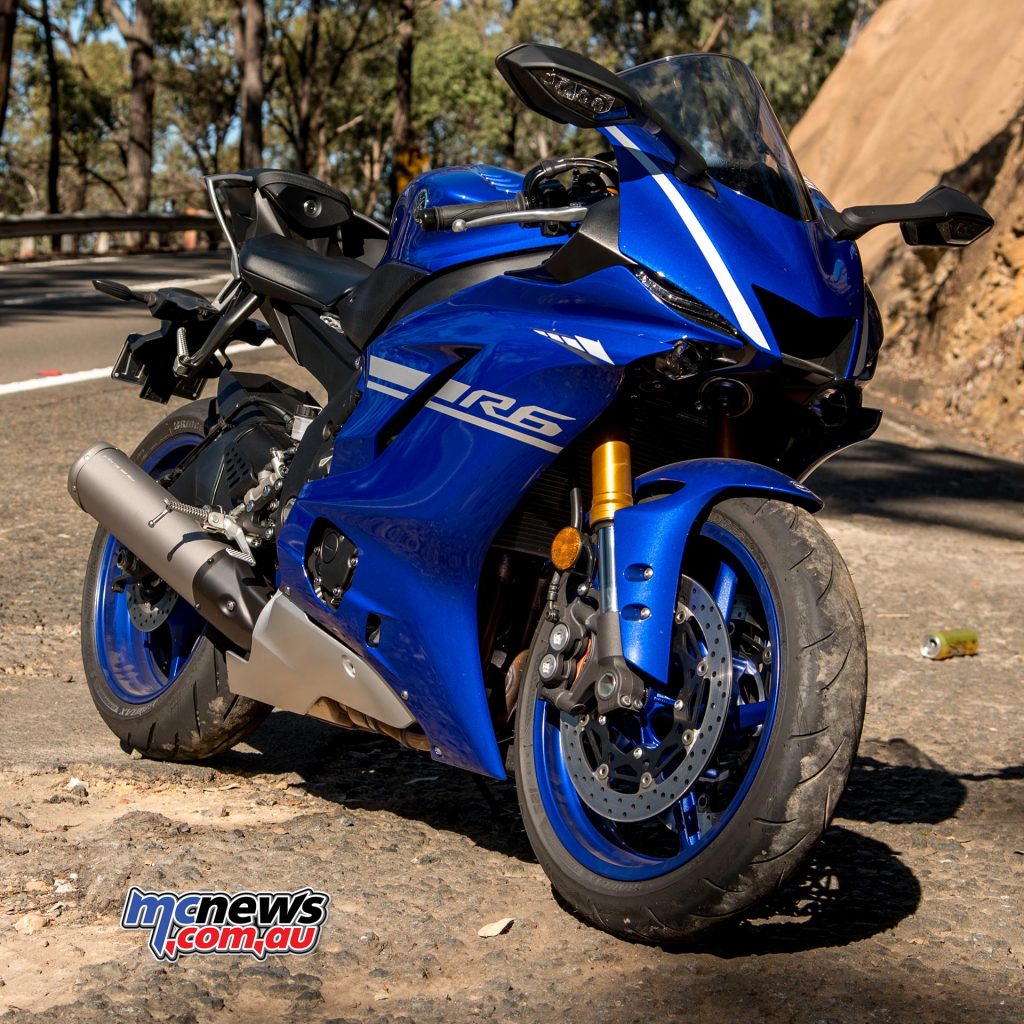
It wasn’t just pouring either, I swear it was bucketing down bullets… My first ride on a seemingly alien bike and new gear, and I am heading out onto the chaotic streets of Sydney as this downpour sets in. If I wasn’t needing spare undies before, I was then.
The other riders, including some previous road race champions knew that road racing leathers weren’t water proof, but I didn’t. So, as we geared up, I quickly realised I was missing some vital accessories, and the other riders quickly recognised this motocross kid was a complete asphalt virgin. Long story short, they all covered up in their wet weather gear and I got soaked.
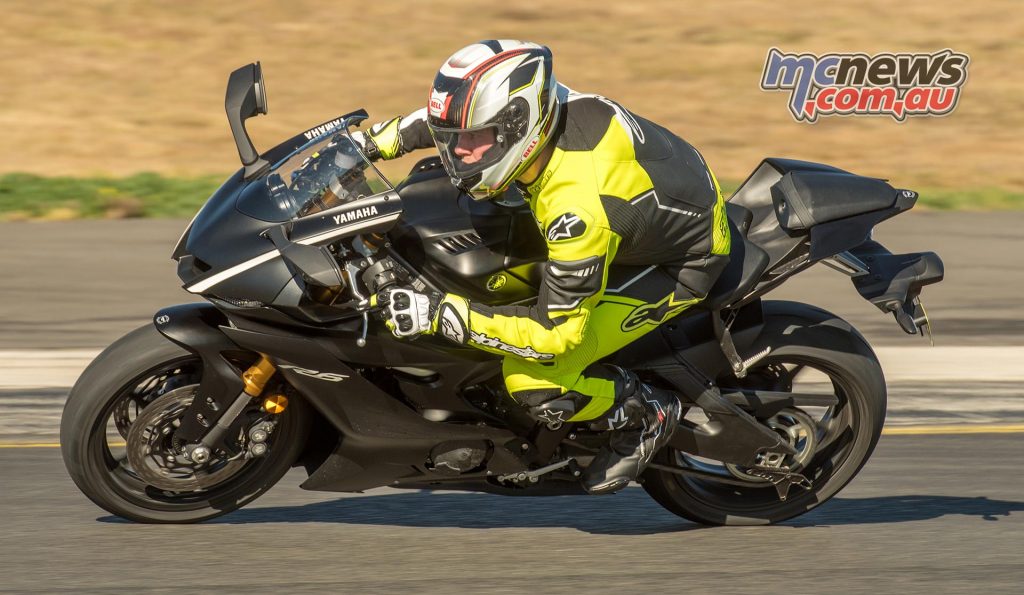
If I was going to crash the R6 at any time during the launch, it was going to be during that ride… From head to toe, I was drenched and a little cold by the end of the ride too. My concern of grabbing too much brake and sliding down the water-topped Sydney roads was about as high you could imagine as well. But, I survived.
Looking back, I feel that ride was like a road bike initiation for me, because in an almost movie-like turn of events, at the end of the ride, ex World Endurance Champion Steve Martin came over (all warm and dry), tapped me on my sopping wet, shivering shoulder and said with a joking smile, “Welcome to the road bike world mate.” I was learning, and learning quickly…
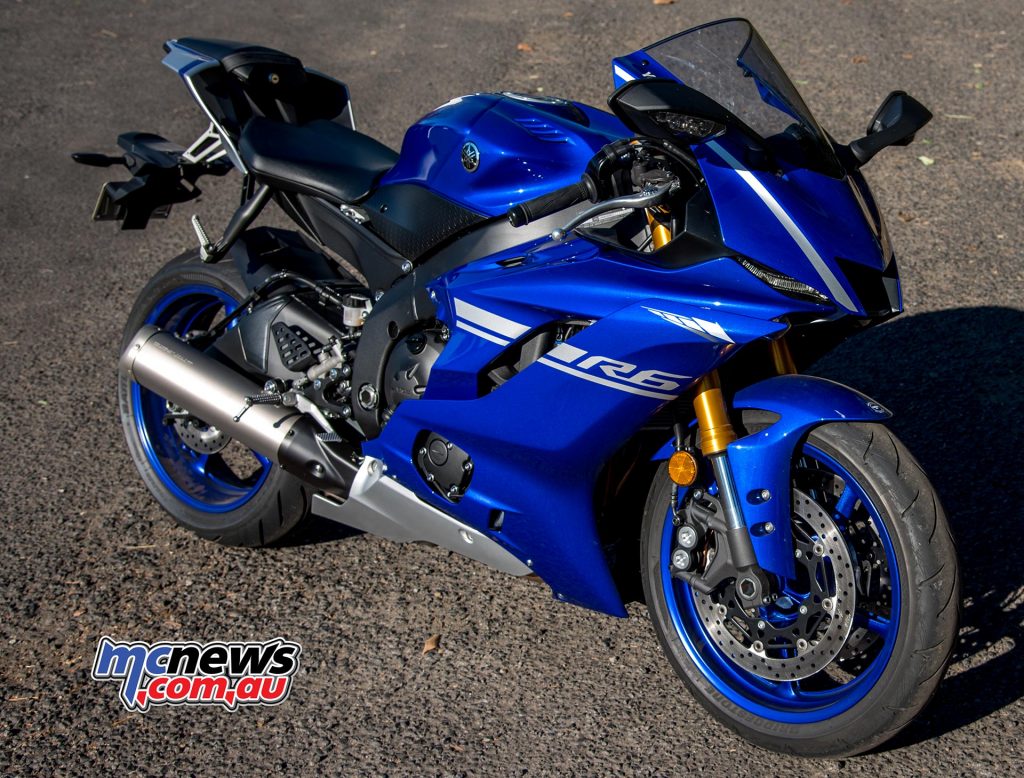
Track day
After surviving the rainy Monday ride, Tuesday was track day. After being the centre of a few jokes the night prior, I was grateful to actually have the full support of each of the Yamaha techs, event journalists and pro racers that day. They knew I was the motocross kid turned bitumen-rookie and they all went out of their way to help me get comfortable and learn the ropes of track riding as quickly as possible.
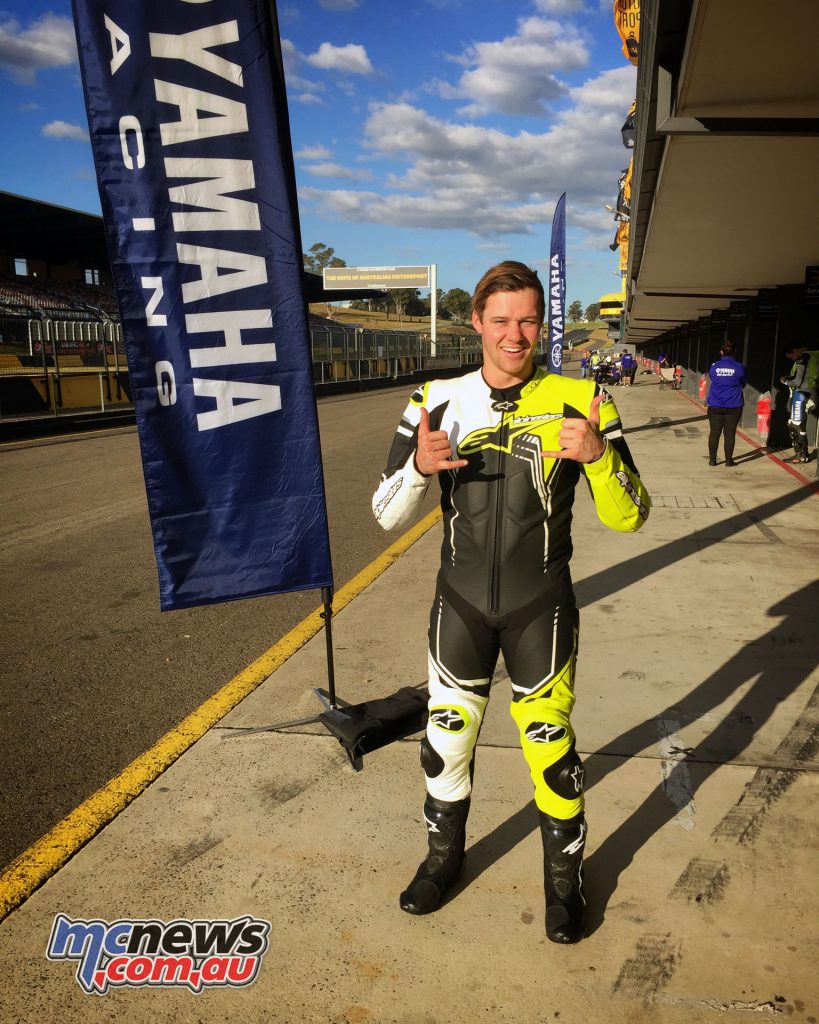
In particular, Kevin Magee (Suzuka 8 Hour winner and ex 500cc GP rider), Steve Martin and Cam Donald (Isle of Man TT winner), each took time out of their sessions to allow me to follow them to pick up on their lines, body positioning, braking areas and gear selection.
They were even kind enough to follow me during the day so that they could provide me with tips as to where I could further drop my lap time. If I had any questions or queries, and trust me I had a lot, I was met with helpful feedback from each and every person around me. It didn’t matter if they were a seasoned-pro or more of a club road rider like I believed myself to be, it made me appreciate the whole experience!
The road bike experience
If I was to tell you I was comfortable on the road bike when I first got on, I’d be lying. I’d be lying so much so, that I wouldn’t be able to say when I first threw my leg over the bike, I couldn’t find the foot pegs for at least five to six seconds… I finally found them up near my butt…

Remember, I’m a motocross racer, for me, the foot pegs are typically down low and smack-bang in the centre of the bike – pretty hard to miss right… Not the case with these road bikes – when I was sitting on the bike to take off I felt like a rabbit crouched over the fuel tank trying to dry hump it… interesting thought that…
Once I got comfortable, my next foreign experience was how little you actually move the handlebars to turn the bike… It all comes from the bike’s lean angle and what I eventually found out to be “counter steer”.
For any motocross guys like me, counter steering basically refers to applying pressure to the left side of the handlebar (theoretically turning the bars to the right), but helps you turn to the left. Weird… I thought that only occurred when drifting and I hadn’t planned on drifting the R6 at all, so that was another thing to get my head around.
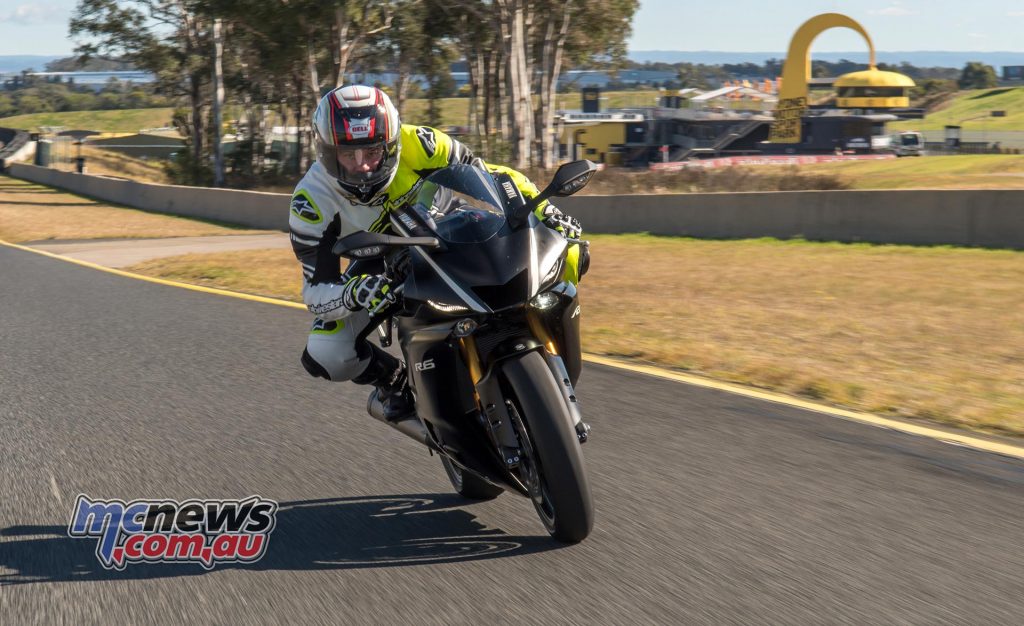
I also had never been exposed to a Quick Shift System (QSS), which I now want on my motocross bikes. The QSS enabled me to shift up gears without the need for any clutch engagement, as it cancels drive torque when an upshift is detected.
So, it basically feels like an automatic shift in a car and is seriously so smooth. The other features I learned about very quickly (because they helped my rookie butt), were the anti-lock braking system (ABS), advanced traction control system (TCS) and engine maps.
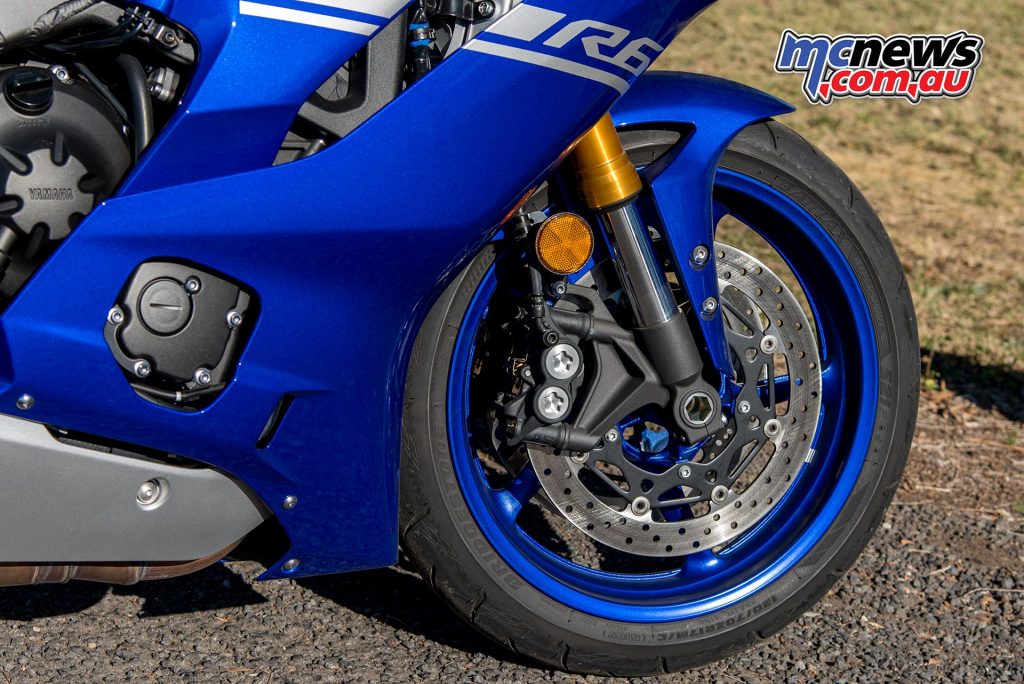
As the name implies, the ABS minimise any skidding or locking up of the wheels under braking, and I found this comforting to have when out on the wet Monday ride. The ABS was also of huge assistance when setting up for turns on the track at speed, as I found the variation in cornering between motocross and road riding to be huge.
In motocross, as you progress with your riding you can be more aggressive on the brakes while standing and shift the rear wheel out sideways to set up for ruts or berms, but as there aren’t any ruts or berms on a road race track, and drifting a road bike sideways is a little less inviting at speed, I wasn’t feeling the need to push it that hard too soon… I’ll leave that for Rossi and the boys.
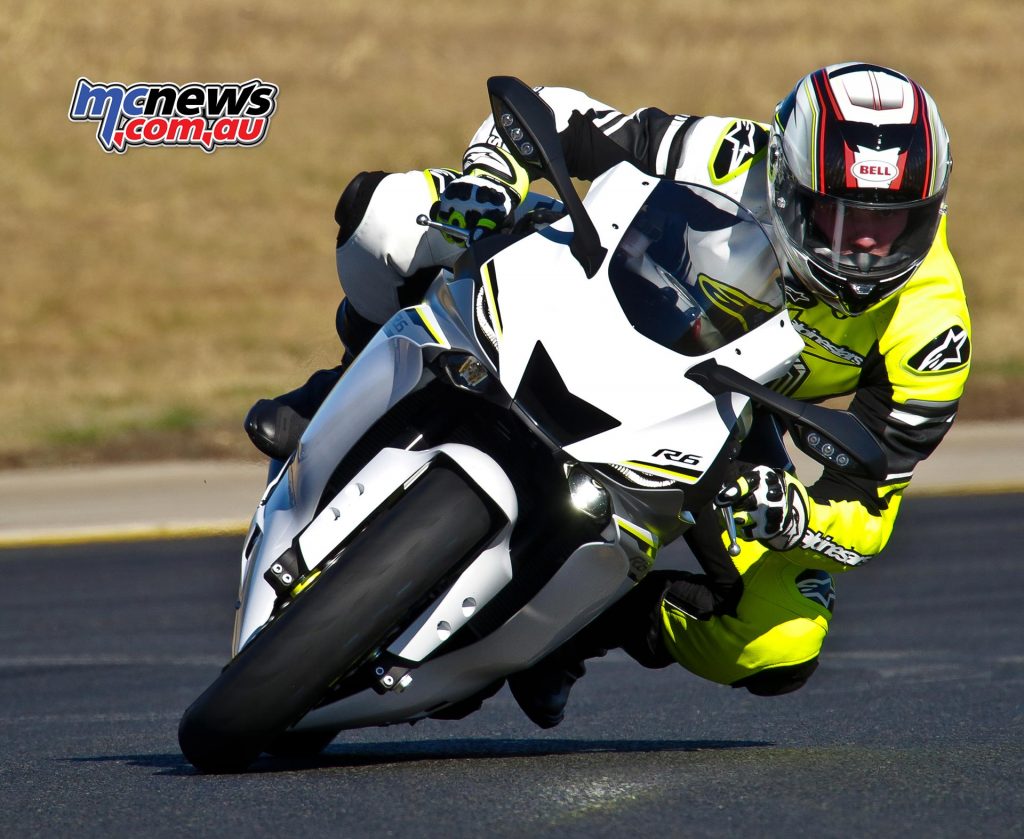
Then there was the TCS feature. It has seven options, from OFF (no traction control), to setting one (minimal traction control), up to setting six (maximum traction control). I used setting five for the rainy Monday ride as I wanted to ensure I remained upright.
Upon arrival at the track I traded over to level four for the first couple of sessions before eventually moving on to level three. Highly experienced racetrack riders would opt for level one or OFF for the TCS, however my goal involved keeping the bike rubber side down for the entire event so I was happy to be conservative for this first track experience.
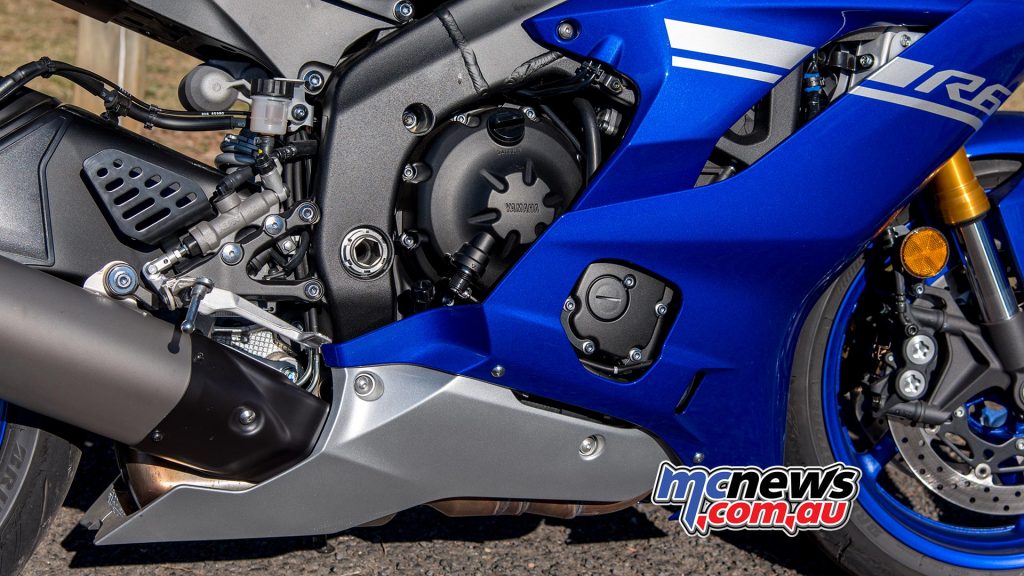
The engine mapping also featured three options – Mode B (soft); Standard; and Mode A (aggressive). The purpose of the three maps is to provide touch-of-a-button changes between modes for riders, making it very easy to adjust to suit changing track conditions.
On the rain affected street ride I used Mode B, which was great in retarding any onset of aggressive power and as a result helped me keep the bike upright. Once we arrived at the track though, I was set on Mode A and I’d say it would be fine to use for the typical R6 customer.
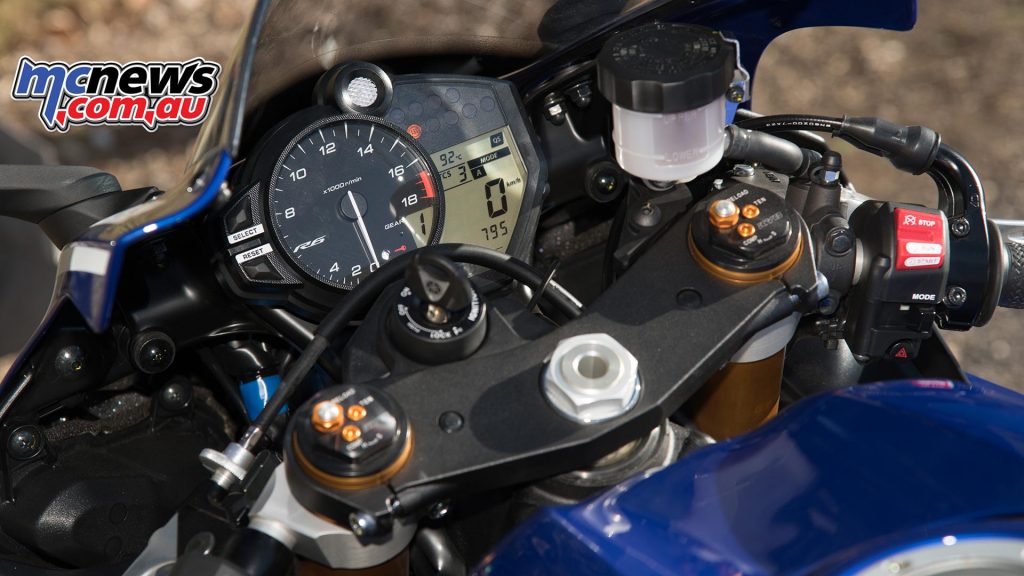
The final thing surprise for me was that the YZF-R6 accelerates very much like a two-stroke, whereby its peak power is found at a whopping 14,500 RPM. If I was hitting that regularly on my four-stroke dirt bike, I’d probably have quite a hefty repair bill by now.
As a four-stroke motocross rider who likes to use a higher gear selection, I struggled with riding the bike in the higher rev range. This was mainly because when I’d usually be shifting up gears, the R6 was still building to hit peak power.
After a little more experience though, I was happy to sacrifice a little time on the exits through running a higher gear in the turns as I felt it allowed me to setup for each tight turn better, keep my laps consistent and improve my flow.
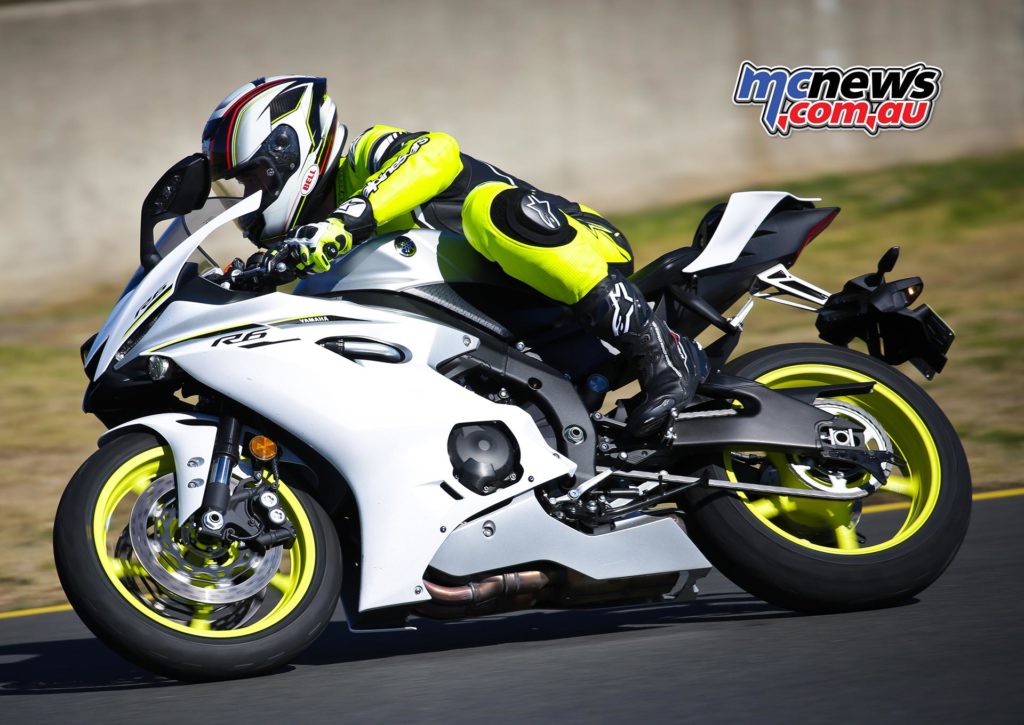
The big changes
For 2017, YZF-R6 takes a huge step toward its big brother YZF-R1, in that a host of the new features are derived directly from the superbike. The all-new R6 now features the R1 derived low-drag front fairing, 43mm KYB forks, 25mm diameter front axle, recessed LED twin headlights, upsized 320mm dual front braking discs with aluminium four-pot opposed piston callipers, and as mentioned previously, ABS, TCS and QSS.
The other major updates noted include a redesigned (and R1 based) KYB rear shock, central forced air intake, 17L aluminium fuel tank, 20mm narrower magnesium sub frame, lightweight swing arm and hubs, new angled seat, and R-series instrument display.
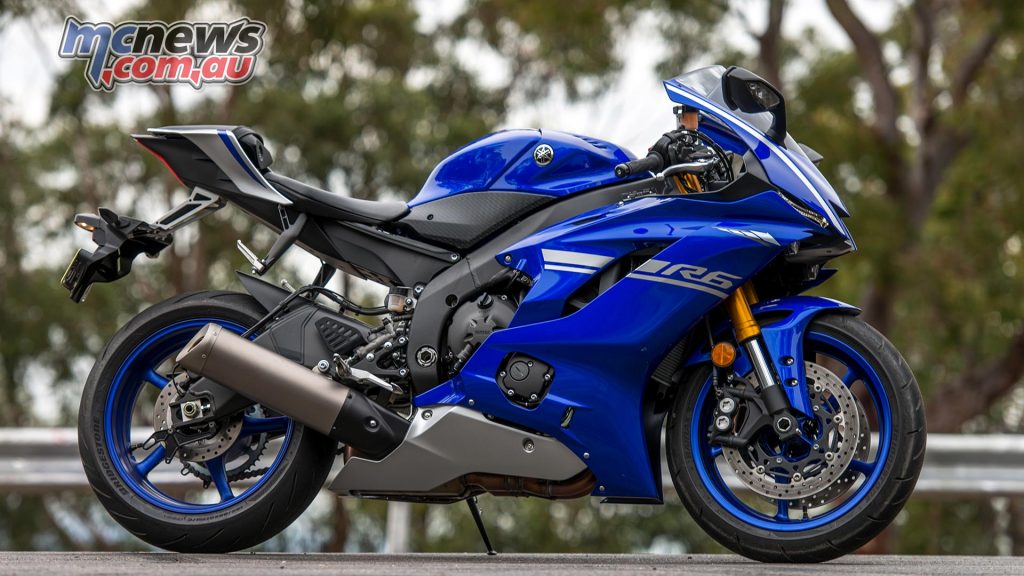
As I’m not an expert on road bikes and won’t claim to be, I can’t explain how the new R6 stacks up against previous or competitor models, but I can tell you this much. The professional racers that rode the all-new model, whom had also ridden many previous season bikes, told me that the bike handles and brakes far better with the new R1 adopted front brake and KYB forks.
They also said that the ABS, TCS and QSS are great assets to be introduced, which I can agree with, regardless of my lack of road racing experience, as I definitely benefited from them and feel any weekend level rider would too.
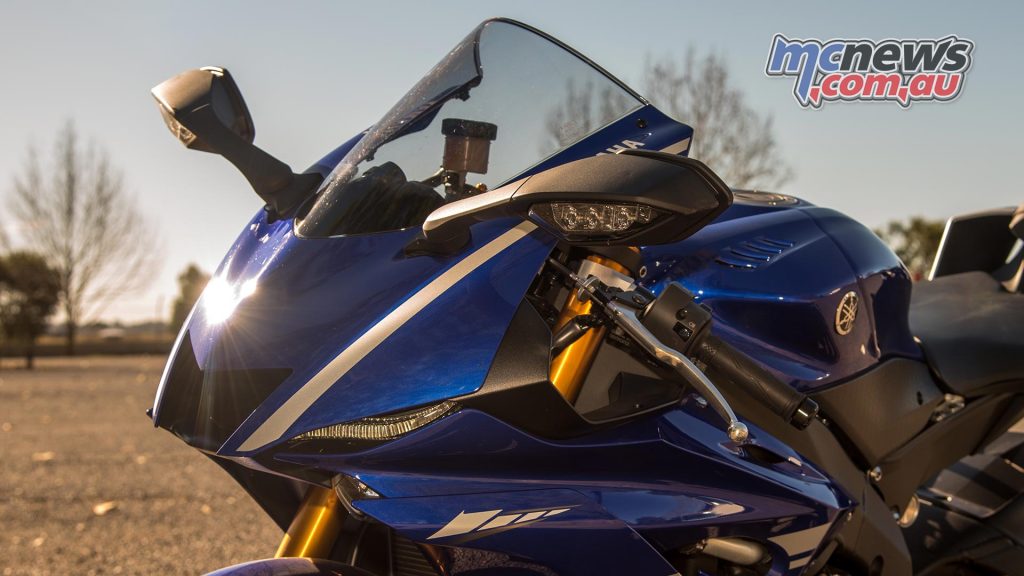
The comparison
I am fortunate enough though, to be able to compare the road spec YZF-R6, to the Yamaha Racing Team track-spec R6, as well as the little brother YZF-R3 and big brother superbike YZF-R1.
For those not in the know, the typical entry level bike for road racing in Australia is the R3. After spending the majority of my day on the R6, I found the R3 to be a comfortable “little” bike. I say little, as it felt physically smaller and rode like a typical four-stroke – topping out below 14,500 rpm.
This is the bike I feel you would recommend if you were a beginner, or transferring over from motocross and interested in trying out road racing or looking to take a bike for a test ride.
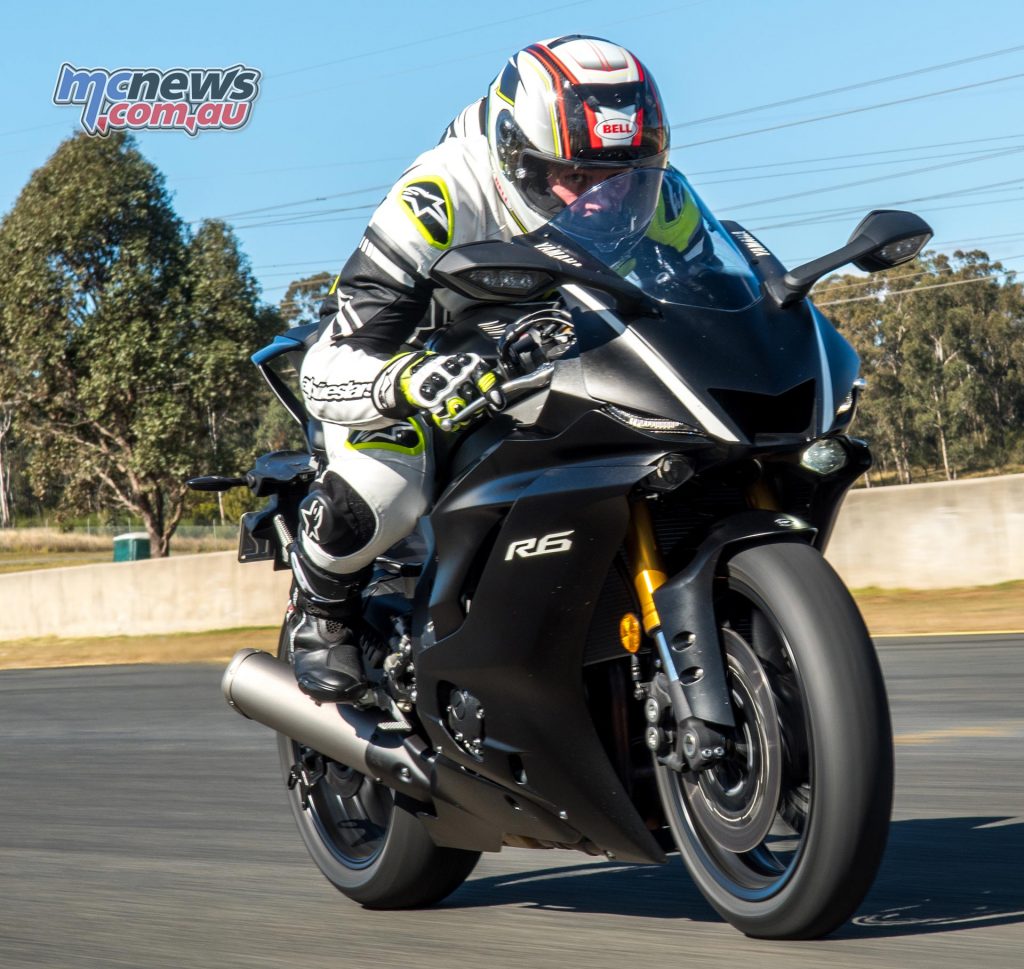
The R1 was a whole other beast… I know now why they call it a “superbike”. Because when I headed down the SMP straight at 200+km/h and had the front wheel lift while accelerating, I was “super” scared.
It’s also not an ideal situation to be in as a rookie you know. Other than that, the R1 handles very similar to the R6, but has an endless amount of power that I’m not yet wanting to try tame while in a racing situation… Again, I’ll leave that to The Doc and his boys.
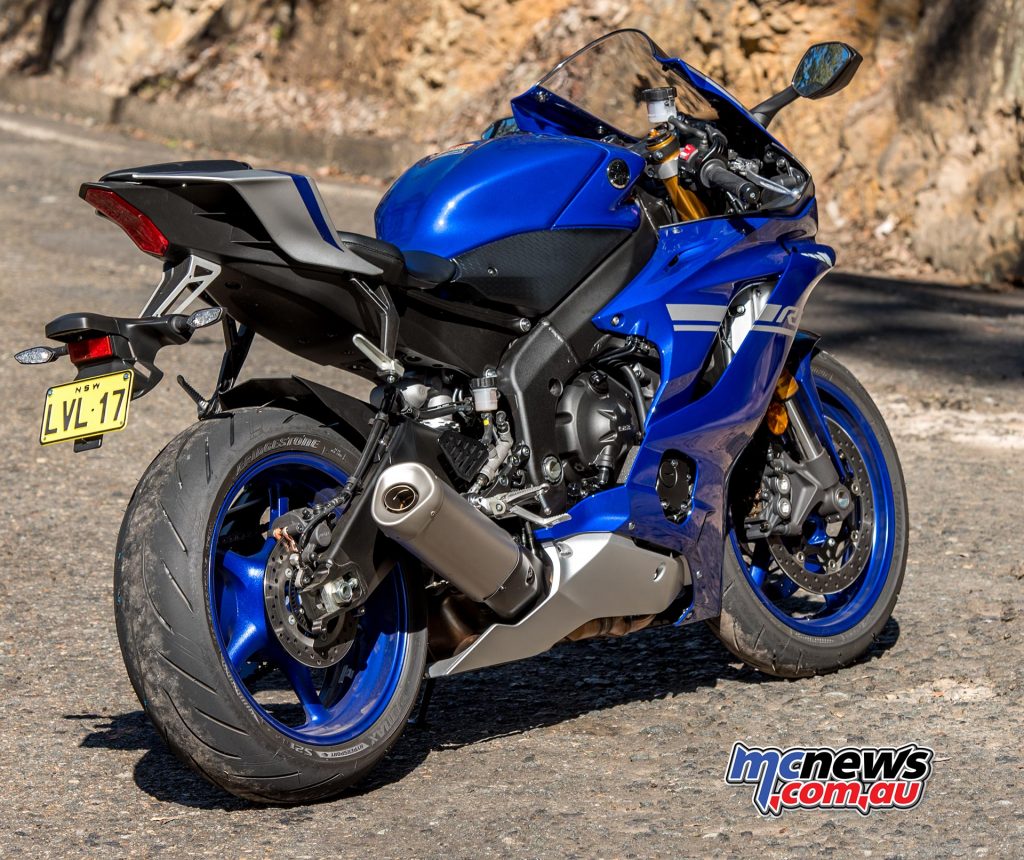
As a former motocross racer, if I was to choose one bike to commence my road racing career on (it’s never too late you know) it would be the R6. I say this because I want a solid base of power and feel I would struggle with the “little” R3 after spending so much time on powerful motocross 450’s over the last few years. At the other end of the spectrum, as I said above, I’m not quite ready for the R1 yet, so the R6 would be the perfect middle ground for myself and others like me!
Now I’ve just got to pay $17,499, choose which of the three colour ways – “Tech Black”, “Intensity White / Matte Silver”, or “Team Yamaha Blue” that I like most, and then park it inside my garage at home.
What do you think MCNews – should we let the readers decide if I’m ready to make the transition to bitumen?
Todd Jarratt.
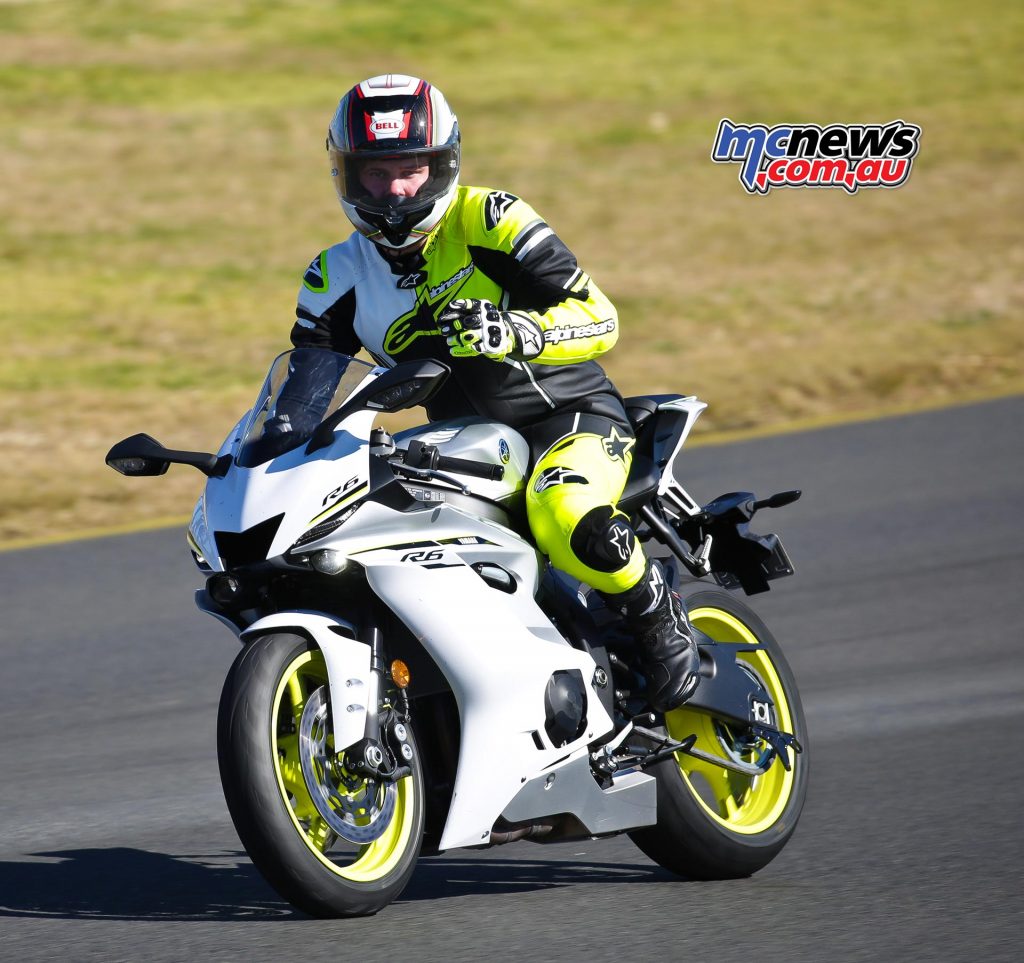
2017 Yamaha YZF-R6 Specifications
- Website – www.yamaha-motor.com.au (link)
- RRP – $17,499 + ORC
- Engine – Four-cylinder inline DOHC 16-valve liquid-cooled four-stroke, TCI ignition, fuel-injected, YCC-T, variable intake trumpets, TCS, D-Mode, YCC-I
- Capacity – 599cc
- Bore x stroke – 67 x 42.5mm
- Compression – 13.1:1 compression
- Gearbox – Six-speed, QSS
- Clutch – Wet multi-plate slipper clutch
- Frame – Aluminium DeltaBox, alloy swingarm
- Rake – 24°
- Trail – Trail: 97mm
- Front suspension – KYB 43mm fully adjustable inverted forks, 120mm travel
- Rear suspension – Monoshock fully adjustable shock, 120mm travel
- Front brakes – Dual 320mm discs, four-piston calipers, radial-pull master-cylinder
- Rear brakes – 220mm disc, twin-piston caliper
- Tyres – 120/70 – 17in, 180/55 – 17in
- Dimensions
- Wheelbase – 1375mm
- Seat height – 805mm
- Ground clearance – 130mm
- Dry weight – 176kg
- Fuel Capacity – 17L























